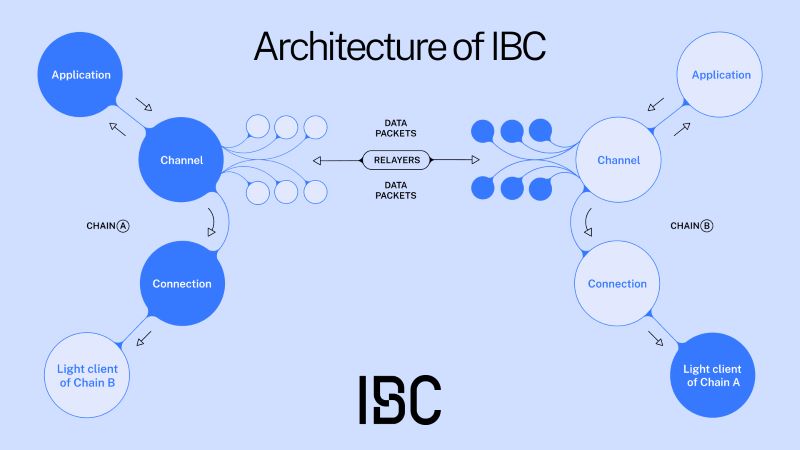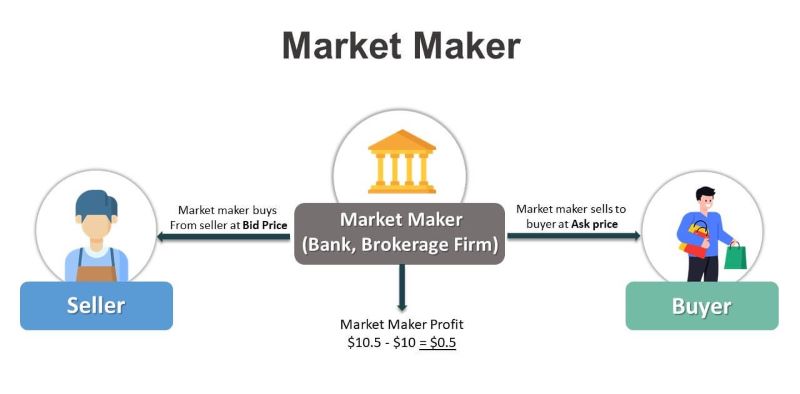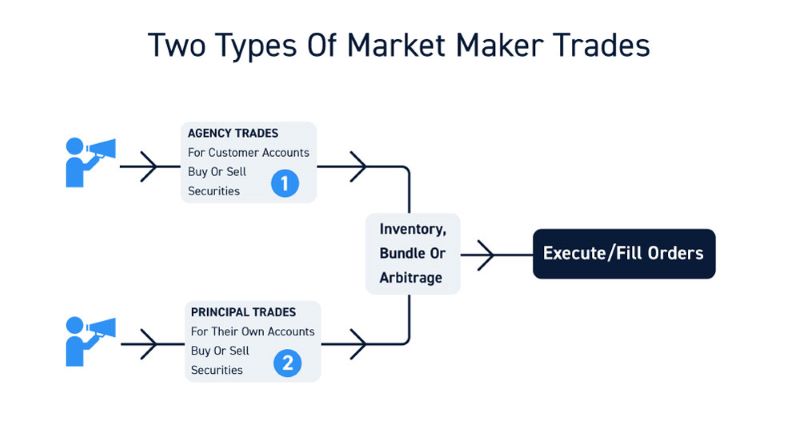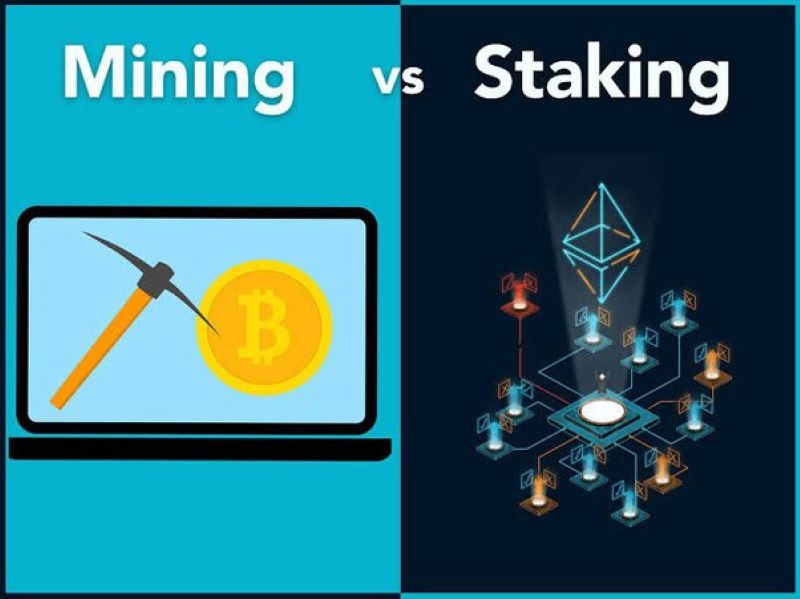Inter Blockchain Communication: Unveiling the Future of Cryptocurrency Connectivity
Picture a world where blockchains talk to each other with ease. That’s where Inter Blockchain Communication (IBC) steps in. I’ll guide you through how this tech is changing the game. Think of it as a bridge for digital coins and data to jump from one blockchain to another. It’s the spine that holds different chains together, letting them work as a team. This isn’t just cool; it’s vital for a future where all blockchains link up. If you’re keen to dig into how your crypto can move freely in a broader blockchain universe, you’ll want to hang on to every word. Let’s unravel this knot together and see how deep the rabbit hole goes!
Understanding the Basics of Inter Blockchain Communication (IBC)
What is IBC and How Does it Work?
Imagine different islands talking to each other. IBC helps blockchains do just that. It lets them send messages and value. Think of it as a postman for digital islands. It’s a rulebook for how these islands share stuff safely.
IBC works with a special thing called a ‘relay’. The relay is like a bridge. It links one blockchain to another. Each chain checks and agrees before anything crosses this bridge. This way, everything stays safe and correct.
The Role of Consensus Mechanisms in IBC
But how do chains trust each other? They use something called ‘consensus mechanisms’. This is like a group of friends deciding what game to play. They all have to agree. In IBC, each chain’s computers must agree on what’s true. This stops cheats and keeps the chains working well together.
IBC is the future of how blockchains will talk. It is what will make different crypto coins work together. This makes crypto stronger and smarter. Think of it as teamwork. Good teamwork makes dream work in crypto too!
The Architecture of IBC Protocol
Unpacking the IBC Transaction Process
Imagine blockchains as different cities with their own rules. They can’t talk easily. Inter blockchain communication, or IBC, is like a new road that connects them. It lets them share info and value fast and safely. IBC is a big deal for blockchain interoperability.
IBC protocol details help us understand how different blockchains can talk to each other. With IBC, we can send tokens and data across many blockchains without a hitch. This communication happens through a process known as ‘handshakes’. Handshakes are like when two city mayors agree on trade rules. They set up a safe connection between blockchains.
Now, cross-chain technology is not just about sending messages. It’s about agreeing on what the messages mean. This is where the consensus mechanisms in IBC come in. Blockchains use these rules to agree that the info shared is true without a third party. It’s like cities using the same map to locate trade goods.
Benefits of IBC include letting blockchains use each other’s strengths. One chain might be super fast and another super secure. Joining forces, they create a powerhouse for users. Think Iron Man’s suit, but for blockchains.
With IBC-enabled blockchains, the magic happens through relayers. These are like messengers running between cities, carrying transactions and info. They make sure each blockchain knows what the other is doing.
Exploring the IBC Standards and Framework
The IBC framework overview shows us the rules and standards. They make sure all blockchains speak the same language. IBC standards are like traffic laws. They keep the data moving smoothly and safely.
Blockchain bridges are part of this framework. They are like direct flights. With them, you can go from one blockchain to another with no stops. This direct route is faster and more efficient.
The secure blockchain interaction that IBC offers can change how we use crypto. We can see new apps that work across many chains. It’s like having a passport that gets you into every city, no visa needed.
IBC network layers matter too. They’re like layers of a cake. Each layer has its part. You can’t just have frosting. Layer one might handle transactions, while layer two deals with apps. Together, they make one tasty treat that does it all.
Multi-chain ecosystems become richer with IBC. More chains mean more options and services for us all. It’s like having a bigger toolbox for building cool stuff.
IBC vs. atomic swaps is an interesting talk. Atomic swaps are swaps directly between users on different chains. With IBC, it’s like using a bank to make sure everything goes smooth.
Scaling blockchain with IBC is about handling more transactions fast. Blockchains can grow and serve more people. It’s like adding more lanes to our roads so everyone can move without traffic jams.
Channel and packet semantics in IBC are complex parts. Think of them as the details of a text message. They ensure your emojis show up right in the chat.
IBC in cryptocurrency is a game-changer. It can lead to better prices and more choices. It’s like shopping at a huge mall instead of just one store.
Last up, cross-chain smart contracts with IBC let us set rules that work across many chains. This can create massive new ways to use blockchain, like building skyscrapers with Lego bricks.
IBC can unlock a world where different blockchain tools work together in harmony, making things easier and more fun for us all.
The Impact of IBC on Blockchain Interoperability
Use Cases: From Token Transfers to DeFi
Let’s talk about IBC, the secret sauce that lets different blockchains chat. It’s like phones for cryptos. Imagine if Bitcoin could whisper to Ethereum or if your arcade tokens worked at every game center in town. IBC makes this possible. You can send coins over various chains without a hassle. It’s like magic, but it’s real because of IBC.
Now flip that coin, and you’ll see DeFi lighting up with IBC’s power. You can hop into new markets or loan platforms beyond your home chain. It’s not just about sending coins; it’s about making big things happen across chains.
But it’s not all smooth sailing. There are big hills to climb and dragons to slay, like making sure everything stays safe and sounds. IBC is tough work, but the rewards? Huge.
Addressing the Challenges and Security Concerns of IBC
Let’s get real. Connecting chains is risky business. Hackers lurk, waiting to snatch your digital gold. But smart folks are on guard, beefing up IBC’s walls and locks. This means building trust is a big deal. We need to ensure that bridges between chains are like Fort Knox.
Plus, we’re still figuring out the best way to join different chains in a big dance without stepping on toes. It’s not just about can we; it’s about how do we do it right. But we’re getting there, and the future is looking bright. It’s all for making your crypto dreams come true. Keep your seat belts buckled, because the IBC journey is just getting started.
Implementing IBC in the Real World
IBC within the Cosmos Network and Beyond
Think of a world where different countries speak the same language. It’s easier to share ideas and goods, right? That’s what Inter Blockchain Communication (IBC) does for blockchains. IBC lets different blockchains talk to each other. They can move tokens and data without a hitch. Imagine sending Bitcoin to someone who uses Ethereum. Before, it was tough. Now, with IBC, it’s like sending an email.
The Cosmos network was one of the first to use IBC. Cosmos has many chains working together. It’s like a busy bee hive, buzzing with activity. Each chain is a bee, and IBC is their dance. They use it to tell each other where the sweet blockchain flowers are. In this case, those flowers are data and coins. Thanks to IBC, they share with ease. It’s not just Cosmos, though. Other networks are joining the dance, linking up more and more.
Enhancing Interoperability: The Future of Cross-Chain Communications
What about all the chains out there? Can they chat using IBC? Yep, many can! But they need the tech to speak IBC first. Think of it like installing an app to send messages. Once they get the tech, they’re good to go.
Why bother? It’s all about teamwork. Blockchains that work together can do more. They can handle more users and ideas. People can use apps on one chain with coins from another. This teamwork creates new ways to use blockchains. We call it interoperability. Interoperability is like having one key for many locks.
But IBC isn’t just a key. It’s secure, too. It checks that chains can trust each other. Think of IBC like a bridge with guards. Only those who follow the rules can cross.
With this tech, the future looks bright. Chains will link up more and more. They will make new services and share resources. This is especially big for DeFi, where sharing boosts the whole game.
Yet, it’s not all smooth sailing. Some worry about safety as chains link up. But the folks behind IBC are on top of it. They keep making it safer and better.
So, what’s next for IBC? More growth, more links, and solving more puzzles. As more chains use IBC, we’ll see a huge web of blockchains. They’ll talk and trade like never before. That’s the heart of IBC — bringing everyone together for a bigger, bolder tomorrow.
In this post, we’ve covered the nitty-gritty of Inter Blockchain Communication (IBC). Starting with basics, we explored how IBC works and the part consensus mechanisms play. We then dove into the IBC protocol’s design, looking at how transactions happen and the rules they follow.
We also talked about how IBC changes the game for blockchains to work together. We looked at examples, like moving tokens and growing DeFi, and tackled the tough parts, like keeping it safe. Lastly, we looked at real-life uses, focusing on how the Cosmos network uses IBC and what this means for the future.
To wrap it up, IBC is key for blockchains to ‘talk’ to each other. This opens doors for new, powerful ways to use crypto. There’s a lot to get excited about as we make these tech leaps, and IBC is leading the charge into a world where blockchains are no longer solo players but a team working together for bigger, better solutions.
Q&A :
What is the purpose of Inter Blockchain Communication (IBC)?
IBC is designed to create a network of interconnected blockchain systems, allowing them to communicate and transfer data and assets securely and reliably. This protocol aims to break down the barriers between independent blockchains and facilitate interoperability, which can lead to greater efficiency, enhanced functionality, and a broader range of use cases for distributed ledger technology.
How does Inter Blockchain Communication (IBC) enhance blockchain functionality?
Inter Blockchain Communication enhances blockchain functionality by enabling different blockchain platforms to interact and share information. It allows transactions and messages to be passed across chains, expanding the capabilities of each individual blockchain network, making them more versatile and powerful. This interoperability also opens up opportunities for collaborative applications and new use cases that were not possible with isolated blockchains.
What are the key features of IBC?
Key features of IBC include its protocol architecture that supports trustless and transparent interactions, the ability to work with heterogeneous blockchains, and the facilitation of secure value transfers across different ledgers. It employs a modular approach that separates consensus from application logic, ensuring compatibility with a wide range of blockchains. Additionally, it offers flexibility in designing custom protocols over IBC, addressing specific use cases and requirements.
Is Inter Blockchain Communication (IBC) secure?
Security is a fundamental aspect of IBC, and it has been designed with various mechanisms to protect against common attack vectors. It relies on the inherent security properties of the underlying blockchains it connects, using cryptographic proofs to ensure the integrity and authenticity of the information being transferred. As with any technology, continuous scrutiny and updates are necessary to maintain robust security standards as new threats emerge.
Which blockchain platforms support IBC?
Several blockchain platforms have implemented or are actively exploring the integration of IBC. Cosmos (ATOM) is notable for its pioneering work with IBC, promoting an ecosystem of interconnected blockchains. Other platforms, such as Polkadot and its substrate-based blockchains, are developing their versions of cross-chain communication protocols that share similar goals to IBC. As the demand for interoperability grows, more blockchains are expected to join the IBC ecosystem.





